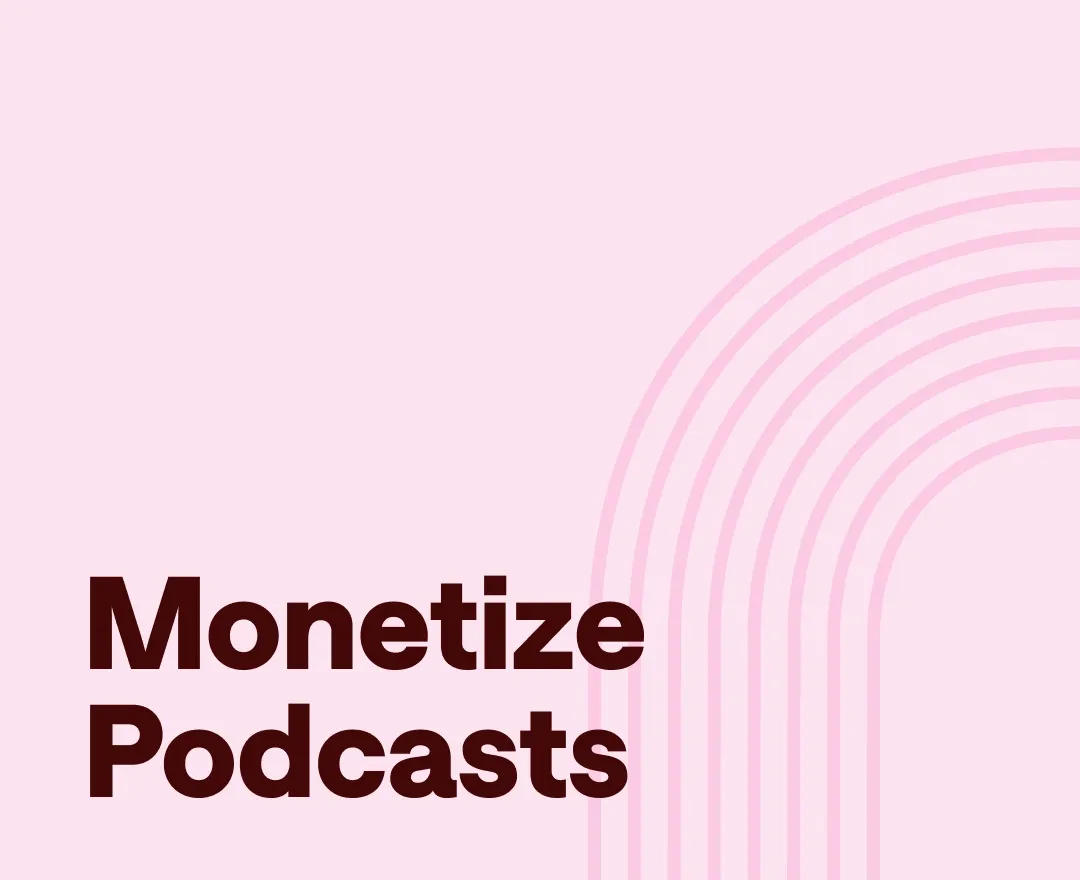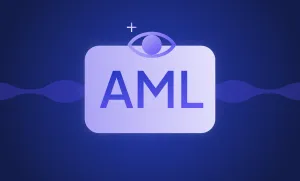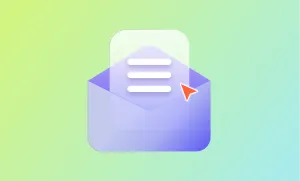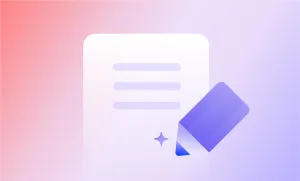During its relatively brief existence in the public consciousness, the podcasting world has rapidly evolved from a handful of hobbyists creating diverting audio curiosities into a full-fledged billion-dollar media industry. With so much money being invested at every level of production, it’s no wonder that podcasters are looking for innovative ways to turn their passion into big profits.
So, how exactly can podcasters make all that money? Glad you asked! We’ve put together this guide to shed some light on the most common and lucrative revenue streams available to podcasters looking to monetize their shows, and what you need to do if you’re thinking about pursuing them. So whether you’re a seasoned podcaster looking to cash in on your hard work or a creative entrepreneur thinking about launching a new revenue stream, read on to learn everything you need to know about turning a podcast into a thriving source of income!
Start With a Strong Foundation
If you’re thinking of making money from your podcast, it’s helpful to approach the process as if you are starting a business–because that is exactly what you are doing. Even if this is intended to just be a side hustle or simply a way to offset production costs, at the end of the day you are going to be selling a product–your show. So just like you would make sure a physical product was ready and primed for success by putting in the necessary research and design work before going to market, it’s important to make sure your podcast’s fundamentals are solid before trying to monetize it.
From a well-thought-out content strategy to consistently professional sound quality, here is a checklist of the groundwork you need to have covered before moving on:
Podcast Niche: Chosen ☑️
Selecting a podcast niche is a critical first step in establishing your podcast's identity. Your niche should align with your interests, expertise, and target audience. By focusing on a specific topic or theme, you can carve out a unique space in the podcasting landscape. It's important to choose a niche that allows you to differentiate yourself from the competition and showcases your passion and knowledge.
Target Audience: Identified ☑️
Understanding your target audience is key to creating content that resonates with them. Conduct thorough research to identify the demographics, interests, and preferences of your potential listeners. This knowledge will help you tailor your content to their needs, ensuring that you provide value and engage with your target audience effectively. By understanding your listeners' desires and pain points, you can deliver content that keeps them coming back for more.
Compelling Content: Created ☑️
Compelling content is the lifeblood of any successful podcast. Invest time and effort into creating engaging episodes that captivate your audience. Craft intriguing episode titles, develop a unique voice, and utilize storytelling techniques to make your content memorable. Providing valuable insights, expert interviews, or entertaining discussions will keep your audience engaged and eager to return for future episodes.
Audio Quality: Optimized ☑️
Audio quality can make or break a podcast. Listeners expect clear, crisp, and professional-sounding audio. Invest in good recording equipment, such as a dependable microphone, headphones, and audio editing software. Additionally, consider improving your recording environment by soundproofing the room to minimize background noise. Regularly monitor and adjust audio levels to ensure a consistent listening experience. By delivering excellent audio quality, you demonstrate your commitment to professionalism and enhance the overall enjoyment of your podcast.
By focusing on these foundational aspects—choosing the perfect podcast niche, identifying your target audience, creating compelling content, and ensuring audio quality—you can establish a solid base for your podcast's success. Once you've laid this groundwork, you'll be well-prepared to explore the various monetization strategies we outline below.
Sponsorships and Affiliate Marketing
One of the most popular and lucrative methods of podcast monetization is through sponsorships and affiliate marketing. These strategies involve partnering with brands and companies to promote their products or services on your podcast. Let's explore the world of sponsorships and affiliate marketing, including how they work, the benefits they offer, and how you can get started.
Names to Know
When it comes to sponsorships and affiliate marketing in the podcasting realm, several big players have emerged. Podcast networks like Midroll, Acast, and Anchor offer platforms that connect podcasters with potential sponsors. These networks streamline the process by matching podcasters with relevant advertisers and handling the logistics of the partnership.
Amazon Associates, Commission Junction, and ShareASale are some of the biggest affiliate marketing programs that can provide access to a wide range of products and services for promotion on your podcast. These programs offer unique referral links or codes that track sales generated through your podcast, earning you a commission.
How It Works
Sponsorships typically involve a partnership between a podcast and a brand or company. The sponsor pays a fee to the podcaster for promoting their product or service during an episode. This promotion can take the form of pre-roll or mid-roll ad placements, shoutouts, or even dedicated episodes focused on the sponsor's offerings.
Affiliate marketing, on the other hand, operates on a commission-based model. As a podcaster, you promote specific products or services to your audience using unique referral links or codes. When a listener makes a purchase using your referral link, you earn a commission on that sale.
Pros
Pro: Direct source of revenue for your podcast
Pro: Align promotions with your podcast's niche and audience for relevance
Pro: Enhance podcast credibility by partnering with reputable brands
Pro: Potential for additional exposure and audience growth through sponsor promotion
Cons
Con: Balancing promotions with maintaining content integrity
Con: Overloading episodes with ads can alienate your audience
Con: Time and effort required for partnership establishment and management
Con: Additional workload of research, negotiations, tracking conversions, and reporting
How to Get Started
Start by identifying brands or products that are popular with your podcast's niche and audience. Reach out to potential sponsors with a compelling pitch, emphasizing the value you can offer through your engaged listenership. If you opt for affiliate marketing, research affiliate programs that align with your podcast's content and audience demographics. Sign up for these programs and start incorporating referral links or codes into your episodes and show notes.
Building a strong listener base and demonstrating the value of your podcast can attract potential sponsors and enhance your chances of securing partnerships. As you grow your podcast and expand your reach, you'll have more opportunities to explore sponsorships and affiliate marketing collaborations.
Read More About Sponsorships and Affiliate Marketing
How To Get Podcast Sponsors
Top Affiliate Programs for Your Podcast
Advertising Networks
Advertising networks provide a platform for podcasters to connect with potential advertisers, facilitating the monetization process. These networks act as intermediaries, matching podcasters with suitable brands and handling logistics such as ad placements, performance tracking, and payment processing.
Names to Know
Companies like Podcorn, AdvertiseCast, and Megaphone offer podcasters access to a wide range of advertisers, making it easier to monetize your podcast. These networks provide a marketplace where podcasters can showcase their audience and available ad inventory to attract potential advertisers.
How It Works
Advertising networks function as a bridge between podcasters and advertisers, simplifying the process of monetization. They offer a centralized platform where podcasters can create profiles, list their podcasts, and provide details about their audience demographics and reach. Advertisers can then browse through these profiles and choose podcasts that align with their target audience.
Once a partnership is established, the advertising network facilitates the placement of ads within podcast episodes. This can be in the form of pre-roll, mid-roll, or post-roll placements. The network tracks the performance of the ads, providing metrics such as impressions and click-through rates. Payments to podcasters are typically processed by the network, streamlining the financial aspect of the partnership.
Pros
Pro: Access to a wide range of potential advertisers and sponsors
Pro: Streamlined process for ad placement, tracking, and payment processing
Pro: Exposure to new audiences through targeted ad placements
Cons
Con: Limited control over the specific advertisers and brands featured on your podcast
Con: Ad placement can interrupt the listening experience, affecting audience engagement
Con: Competing with other podcasts within the advertising network for advertiser attention
How to Get Started
Sign up for an account and follow the network's guidelines for podcast submission. Provide accurate information about your podcast, including audience demographics, download numbers, and any other relevant metrics. Once approved, you'll gain access to the network's marketplace, where advertisers can discover and connect with your podcast.
As your podcast grows and demonstrates its value to advertisers, you may attract more opportunities within the advertising network. Regularly assess the performance of the ads and track audience feedback to ensure a positive listening experience. Stay engaged with the network's community and explore additional monetization options they may offer, such as sponsored episodes or branded content.
Read More About Advertising Networks
All About Podcast Advertising Companies & Why You Need Them
How to Have the Best Podcast Ads Out There
How to Succeed with Ads: Podcast advertising rates
How Can Podcast Dynamic Ad Insertion Help You?
7 Ways Your Business Can Benefit From Podcast Advertising
Subscriptions and Premium Content
Subscriptions and premium content present an exciting opportunity to provide exclusive value to your dedicated listeners while generating a sustainable income. By offering additional content or enhanced access through subscriptions, you can cultivate a loyal community and unlock new revenue streams.
Names to Know
When it comes to setting up subscription services and offering premium content, several notable membership plugins and podcast hosting services have made a significant impact in the industry. These platforms provide the necessary tools and infrastructure to manage subscriptions, process payments, and deliver exclusive content to your audience.
Patreon, for example, has emerged as a leading membership platform that empowers podcasters to create subscription tiers, provide access to bonus content, and foster a community space for their devoted fans. Another prominent option is Memberful, which seamlessly integrates with popular podcast hosting services and offers an intuitive platform for managing memberships and subscriptions and granting exclusive content access.
Glow.fm (now a part of Libsyn) specializes in podcast monetization solutions, allowing podcasters to implement subscription services, offer premium content access, and facilitate listener-supported donations. This platform seamlessly integrates with various podcast hosting platforms, providing a streamlined experience for both creators and subscribers.
For podcasters using a WordPress website, membership plugins such as WooCommerce Memberships, MemberPress, or Restrict Content Pro can be utilized. These plugins enable podcasters to establish subscription models and provide exclusive content to their audience, leveraging the flexibility and customization options available through the WordPress platform.
For even more great examples, make sure you check out this list of leading membership platforms.
How It Works
Subscriptions involve offering listeners exclusive access to additional content or perks in exchange for a recurring fee. This could include bonus episodes, early releases, behind-the-scenes insights, exclusive interviews, or exclusive Q&A sessions. By providing unique and valuable content, you can entice your audience to support your podcast through subscriptions.
Premium content refers to standalone offerings that listeners can purchase individually. This may include special episodes, masterclasses, e-books, merchandise discounts, or access to a members-only community. Premium content allows you to monetize specific offerings without requiring a recurring subscription commitment.
Pros
Pro: Subscriptions provide a recurring income stream, while premium content offers the potential for one-time sales, diversifying your revenue sources
Pro: Subscribers and purchasers gain access to exclusive content and experiences, fostering a sense of belonging and appreciation among your most dedicated fans
Pro: Subscriptions and premium content create a closer connection with your audience, allowing for deeper engagement and a more interactive relationship
Pro: You have the freedom to experiment with different subscription models, premium offerings, and pricing strategies to find what works best for your podcast
Cons
Con: Some listeners may be hesitant to pay for content they have been receiving for free, requiring a strong value proposition and effective marketing to overcome this resistance
Con: Providing exclusive content or premium offerings requires additional time, effort, and resources to consistently deliver value to subscribers or purchasers
Con: Subscribers and purchasers will have high expectations for the quality and frequency of exclusive content or premium experiences, necessitating careful planning and execution to meet these expectations
Con: Depending on your podcast niche, there may already be a saturated market for subscriptions and premium content, making it challenging to stand out and attract paying customers
How to Get Started
Start by evaluating your existing audience and gauging their interest in exclusive content or experiences. Conduct surveys or gather feedback to understand their preferences and what they would be willing to pay for. Develop a plan for creating and delivering premium content or subscription offerings that fit their desires.
Remember, the key to success with subscriptions and premium content lies in consistently delivering valuable, unique, and engaging content that caters to your dedicated audience.
Read More About Subscriptions and Premium Content
Private Podcasts: What are They and How to Create One
YouTube
Expanding your podcast's reach beyond audio platforms can open up new opportunities for monetization. One such avenue is leveraging YouTube to share your podcast episodes and enrolling in its Partner Program to receive a cut of ad revenue.
How it Works
Posting podcast episodes on YouTube involves creating videos with static images or adding a visual component to accompany the audio. You can use podcast hosting platforms that offer automated YouTube uploading or manually create video content using video editing software. As your YouTube channel grows and meets the eligibility requirements, you’ll be allowed to enable ads on your videos and explore various monetization features that YouTube offers.
Pros
Pro: YouTube has a massive user base, providing an opportunity to attract new listeners who prefer consuming content through video platforms
Pro: Adding visuals to your podcast episodes can enhance engagement and make your content more visually appealing
Pro: YouTube offers various monetization features, such as ads, sponsorships, Super Chat, and channel memberships, giving you different ways to earn revenue from your videos
Cons
Con: Producing video content requires additional time and resources compared to audio-only podcasting
Con: YouTube is a highly saturated platform with numerous creators vying for attention, making it challenging to stand out from the crowd
Con: Unlike audio platforms, YouTube's search algorithm primarily focuses on video content, potentially reducing the discoverability of your podcast episodes
How to Get Started
You need to create a dedicated YouTube channel for your podcast to get started. Set up the channel, customize its branding, and provide a clear description that highlights your podcast's unique value proposition.
Next, decide on the format of your videos. You can choose to create videos with static images accompanied by your podcast audio or incorporate video footage and additional visuals. Convert your podcast episodes into the chosen video format and upload them to your channel.
Optimize the titles, descriptions, and tags of your videos to improve their search visibility on the platform. Share your YouTube videos on social media platforms, embed them on your podcast's website, and actively engage with your audience. Encourage viewers to subscribe to your channel, leave comments, and share your content with others.
Read More About YouTube
- How to Use YouTube to Promote Your Podcast
- Top 10 Creative YouTube Video Content Ideas to Get You Started
Merchandise
Creating and selling merchandise related to your podcast can be a fun and creative way to monetize your show while engaging with your dedicated audience. Not only will you be able to directly make money off of sales, but you also will benefit from free advertising when customers show off their purchases!
Names to Know
When it comes to producing and selling merchandise for your podcast, several notable companies specialize in assisting podcasters with the entire process, from design to fulfillment. These platforms offer comprehensive services to streamline the merchandise creation and sales journey. Here are a few prominent names in the industry:
Printful: Printful is a popular platform that offers print-on-demand services, allowing podcasters to create custom merchandise such as T-shirts, hoodies, mugs, and more. They handle printing, packaging, and shipping, providing a convenient solution for podcasters looking to offer branded products to their audience.
Merch by Amazon: Merch by Amazon provides podcasters with a platform to design and sell branded merchandise directly on the Amazon marketplace. With a vast customer base and robust fulfillment services, this platform offers extensive reach and seamless operations.
Teespring: Teespring is a platform that simplifies the merchandise creation process for podcasters. It allows you to design and sell a wide range of products, including apparel, accessories, and more. Teespring handles printing, fulfillment, and customer service, making it a popular choice for creators seeking an all-in-one solution.
These companies offer various services and features to help podcasters bring their merchandise ideas to life, manage inventory, and fulfill orders.
How It Works
First, you'll need to create compelling designs that resonate with your podcast's brand and audience. Collaborate with graphic designers or utilize online design tools to craft unique artwork that can be applied to various merchandise items.
Once you have your designs ready, select a company that feels right for your needs and preferences. Upload your designs to their platform and choose the merchandise items you want to offer, such as T-shirts, hats, stickers, or tote bags.
When a customer places an order, the production company handles the printing, packaging, and shipping of the merchandise directly to the customer. You typically earn a profit from each sale after deducting the production and fulfillment costs.
Pros
Pro: Branded merchandise acts as a form of marketing, increasing your podcast's visibility as your audience proudly wears or displays your merchandise
Pro: Merchandise fosters a deeper connection with your audience, as fans become brand ambassadors by wearing or using your products
Pro: Designing merchandise allows you to showcase your podcast's unique personality and create tangible representations of your brand
Cons
Con: It may take a while to build an audience engaged enough to want to buy merchandise in the first place, whereas advertising is based on listens
Con: Designing and producing merchandise may require an initial investment in artwork creation, inventory, or design services
Con: Managing inventory, packaging, and shipping can be time-consuming and may require coordination with a third-party fulfillment service
How to Get Started
The most important part of selling merch is creating compelling designs that incorporate your podcast's branding and resonate with your audience. These designs should capture the essence of your podcast and appeal to your listeners.
Next, choose a suitable merchandise production and sales company that offers the services you need, such as printing, fulfillment, and shipping. You’ll need to know and be able to communicate your budget, quality requirements, and desired product range.
Once you've selected a platform, set pricing that allows for a reasonable profit margin while remaining competitive in the market.
Promotion is essential to drive sales. Utilize your podcast, website, and social media channels to market your merchandise and create a sense of excitement around your offerings!
Read More About Merchandizing
Donations and Crowdfunding
Donations and crowdfunding provide podcasters with an avenue to generate revenue directly from their dedicated listeners. In this section, we will explore the concept of utilizing donations and crowdfunding as a podcast monetization strategy. We will delve into notable companies in the field, how it works, the benefits and considerations, and how you can get started.
Names to Know
Several platforms specialize in facilitating donations and crowdfunding for podcasters. These platforms offer various features, payment processing, and tools to support podcasters in receiving financial support from their audience. Here are a few notable names in the industry:
Patreon: Patreon allows podcasters to receive recurring donations from their audience in exchange for exclusive content, rewards, and access to a community space.
GoFundMe: GoFundMe is a popular crowdfunding platform where podcasters can create campaigns to raise funds for specific projects, such as equipment upgrades or podcast events.
Buy Me a Coffee: Buy Me a Coffee provides a platform for podcasters to receive one-time or recurring payments, allowing listeners to support their favorite shows.
These platforms simplify the donation and crowdfunding process, providing podcasters with accessible ways to receive financial support from their audience.
How it Works
Podcasters can set up accounts on these platforms, create compelling campaigns, and share them with their audience. Listeners can then contribute by making one-time donations or pledging recurring support. The platforms handle payment processing and provide features to engage with supporters.
Pros
Pro: Donations and crowdfunding offer a direct way for listeners to support their favorite podcasts financially, helping podcasters sustain and improve their shows
Pro: These strategies foster a closer relationship between podcasters and their audience, creating a sense of community and appreciation
Pro: Donations and crowdfunding allow podcasters to fund specific projects, cover production costs, or invest in equipment upgrades based on the support they receive
Cons
Con: The success of donations and crowdfunding depends on the willingness of listeners to contribute financially, which may vary among different podcast audiences
Con: Podcasters need to consistently provide value and engage with their audience to encourage continued support
Con: Running effective donation or crowdfunding campaigns requires time, effort, and promotional strategies to attract and maintain financial support
How to Get Started
To incorporate donations and crowdfunding into your podcast monetization strategy, follow these steps:
- Choose a Platform: Select a suitable donation or crowdfunding platform that aligns with your goals, features, and payment options.
- Create Your Campaign: Craft a compelling campaign that communicates your podcast's value, impact, and the benefits supporters will receive.
- Promote Your Campaign: Share your campaign on your podcast, website, social media platforms, and email newsletters. Clearly communicate the purpose and impact of the funds raised.
- Engage with Supporters: Show appreciation to your supporters by providing exclusive content, rewards, or behind-the-scenes updates. Cultivate a sense of community and maintain regular communication.
- Monitor and Adjust: Continuously evaluate the performance of your campaigns, analyze audience engagement, and refine your strategies based on feedback and results. Utilizing digital advertising analytics, you can gain deeper insights into what strategies are working and which ones need adjustment, ensuring that your marketing efforts are as effective as possible.
Read More About Donations and Crowdfunding
How to Run Crowdfunding for Podcasts
Final Thought: A Podcast’s Most Valuable Resource
Remember, your listeners rely on you to deliver valuable content and uphold your podcast's integrity. Trust is the foundation of a loyal and supportive audience base, which ultimately fuels your long-term success. The monetization strategies we just outlined are tools to support your podcast's growth, but audience trust remains the most valuable resource of your podcast, and should be protected at all cost.








